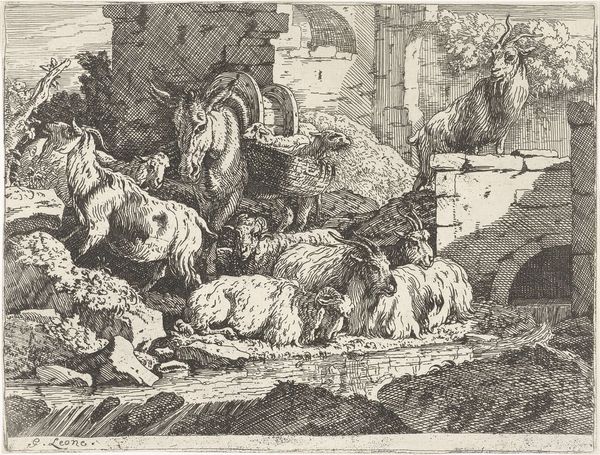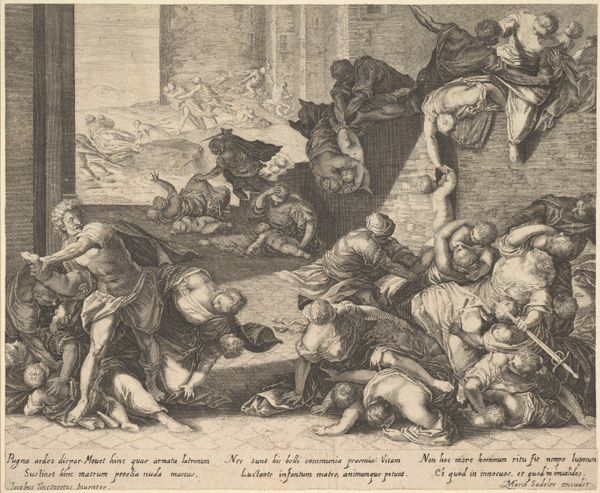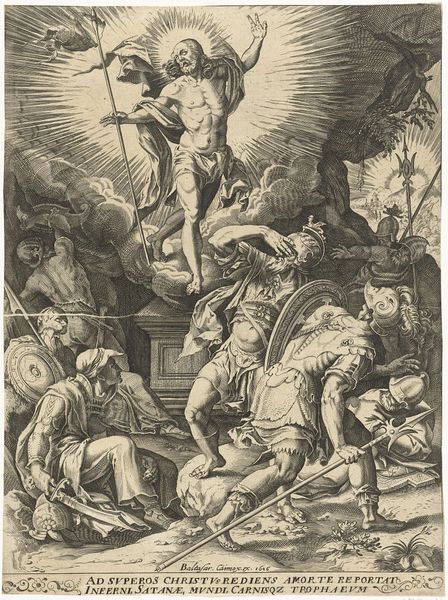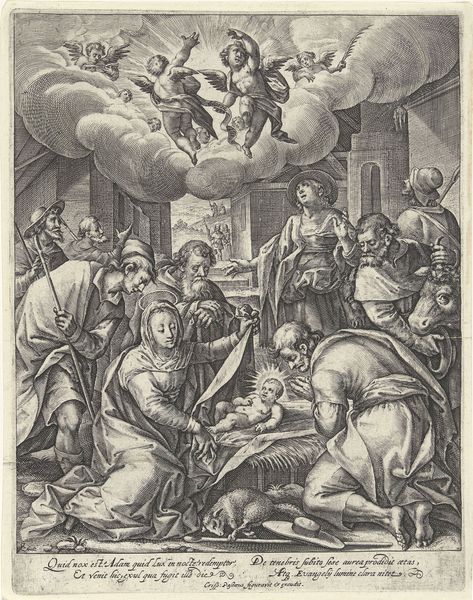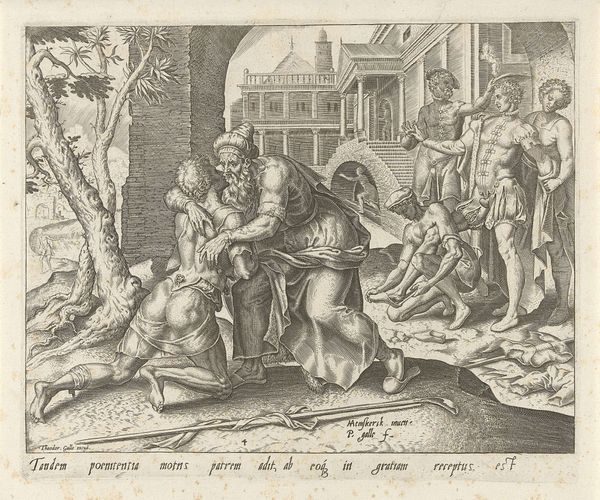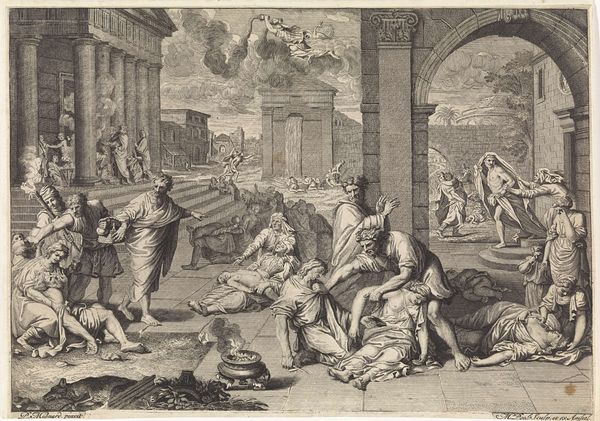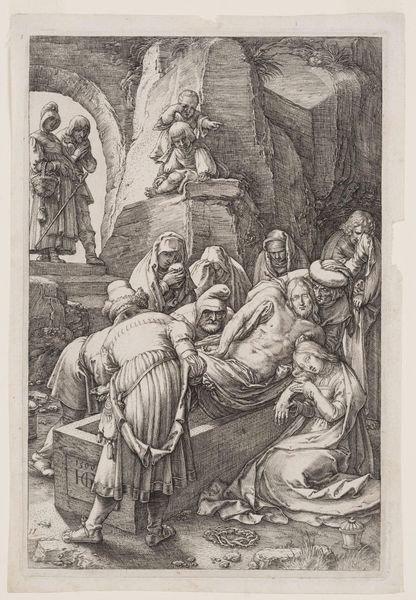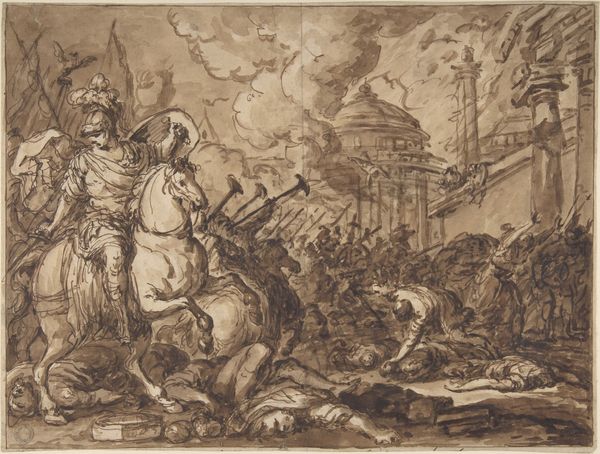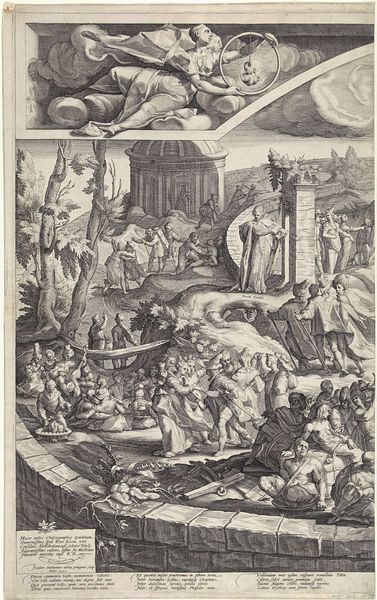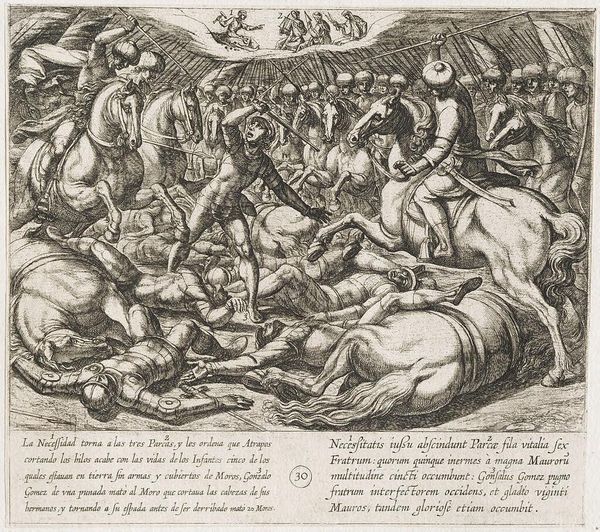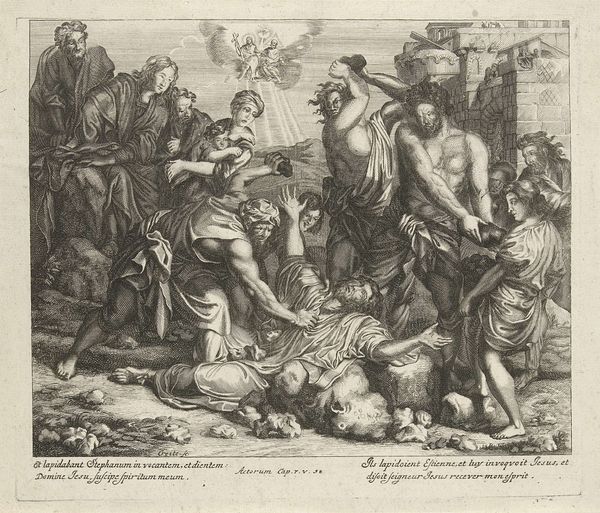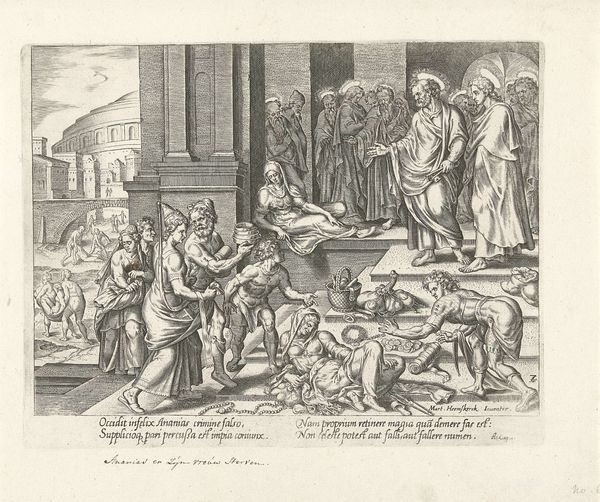
engraving
#
baroque
#
landscape
#
history-painting
#
engraving
Dimensions: height 168 mm, width 220 mm
Copyright: Rijks Museum: Open Domain
Editor: So, here we have "The Annunciation to the Shepherds," an engraving by Govert van der Leeuw, made sometime between 1655 and 1688. It's a pretty busy scene, kind of chaotic, but there's also a definite sense of the divine breaking through. How do you interpret this work? Curator: Immediately, I am drawn to the confluence of the earthly and the celestial. Note how the animals are rendered in such tangible detail, contrasted with the ethereal depiction of the angel and swirling clouds. Think about how these visual choices reinforce a message of disruption; divinity appearing not in a palace, but amongst ordinary life, ordinary animals. What symbols might these animals themselves represent, in relation to Christ? Editor: Well, lambs are often associated with Christ, as a symbol of sacrifice, but there are also bulls... they feel almost pagan. Curator: Exactly! The bull carries ancient symbolism – strength, fertility, even sacrifice in pre-Christian traditions. The artist subtly juxtaposes the new faith with lingering cultural memories, layering different symbol systems for added depth. Do you see how the architectural ruins add to this sense of collapsed or fading orders? Editor: Yes, I hadn’t thought about it that way, but now I see this piece as far more complex and not just another biblical scene. There are visual metaphors hinting at shifts in power and belief. Curator: Precisely. And by using engraving, a medium capable of intricate detail, van der Leeuw preserves these cultural echoes, these transitions, making them visible for generations to come. It’s an interesting glimpse into how symbols accumulate meaning over time. Editor: It's amazing to see how one image can contain so many different layers of meaning, echoing across cultures and histories.
Comments
No comments
Be the first to comment and join the conversation on the ultimate creative platform.
